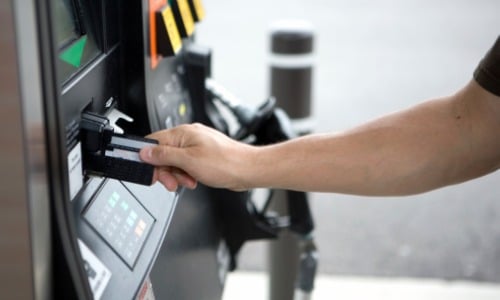
Instead of stealing your wallet, fraudsters install tiny gadgets on card readers to get all your card information. Once they have this, they can drain your account before you know it. Learn how to protect yourself by learning how skimming works and how to keep an eye out for it.
What is Card Skimming?
When a card is skimmed, the information stored on its magnetic strip can be stolen. This includes sensitive details such as the cardholder's name, card number, and expiration date. Scammers may use the stolen data to:
- Make unauthorized transactions
- Sell the information to other fraudsters
- Engage in identity theft
- Forge counterfeit cards
Where Are Skimmers Found?
Skimmers can be placed in various spots where you might swipe your card: ATMs, gas pumps, grocery checkouts, shopping malls, and even vending machines. They might also set up cameras or fake keypads to steal your PIN. Criminals tend to target ATMs and gas pumps that are found in less populated areas where the devices are less likely to be spotted.
How to Find a Card Skimmer:
To spot a card skimmer, always check card readers before swiping, especially at ATMs or gas stations. If something seems off, like a loose part, tell the business and avoid using it.
Tip: Visit the Federal Trade Commission's website to view a photo of what a skimmer looks like at a gas pump.
Ways to Avoid Card Skimming:
- Check the Card Reader and Keypad
If the card reader or keypad seems loose, misaligned, or suspicious, it might have a skimmer attached. If this is the case, avoid using it and inform the business.
Tip: When you’re getting gas, select a gas pump closer to the store or within the attendant's direct line of sight. These pumps are less likely to be targeted by fraudsters. - Watch out for Hidden Cameras
Skimmers might be accompanied by hidden cameras to capture your PIN. Always cover the keypad when entering your PIN to prevent cameras from recording you. - Use Contactless Payment or the Chip Reader
Using digital wallets or tap-to-pay minimizes your risks of falling victim to a card skimmer. Cards with EMV chips are the next safest option because they encrypt information. - Consider How You Pay
Using cash guarantees your card information stays safe. If you’re at a gas pump and prefer not to use cash, especially if you have credit card rewards, pay inside with an attendant. If you’re using an ATM, consider going to your bank's branch location. - Use a Credit Card
While both credit and debit cards are generally safe, credit cards may offer slightly more protection in case of fraud. - Set up Account Alerts
Setting up account alerts can help you spot suspicious activity. If you notice an unusual transaction, even if it's under $10, you can file a fraud claim with your bank or credit card provider.
Check your bank and credit card account regularly to spot any unusual transactions that may signal your information has been stolen. If you are a victim of card skimming, contact your bank or credit card provider immediately.